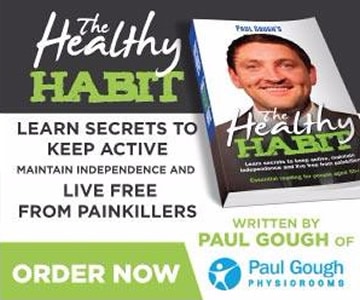Even if you’re big Chelsea fan, you’ve got to feel for Jack Wilshere!
Another ankle injury this week this is likely to keep him absent for the best part of the rest of the season.
It was only about 3 months ago when I wrote in this same column that Wiltshire would likely be the most mentioned player ever in this column – simply because of his awful injury record.
And more specifically his “glass ankles” which just don’t seem to be able to cope with the style of game he likes to play.
But enough about Jack for now.
Let me talk to you about what he this week suffered from, so that you can try and avoid it!
Ligament damage to ankles is nothing new in sport. Whether you like to play rugby, cricket, basketball, football or just go for a run, it’s highly likely that it could happen to you.
But let me stick with football. And specifically, playing “five a side” on the hard in door type of surface. See, when you’re playing on a hard indoor surface a couple of things are happening to make ankle sprains more likely.
First, your lower back can become more “stiff”. And when this happens, muscles in your legs begin to tighten up. You know, things like hamstrings and groins and dangerously, calf and Achilles muscles.
And I say dangerously, because when calf muscles tighten, you’re more likely to suffer from an ankle sprain. All to do with the lack of flexibility that starts to happen down there.
So the ankle looses it’s flexibility – even just a little bit makes a difference – and you’re more likely to roll it. i.e. a sprain.
What happens next is your ankle gets even more “stiff” and tight – even if you’ve been diligent and followed the recovery protocol set up for you by a physio – and that means your calf muscle gets even tighter now too.
So you’re now on a self perpetuating cycle.
And if it’s happening at age 40+, then you’ve got a natural decrease in flexibility of both ankle and calf going on at the same time too.
All in all, it’s not good! And these three factors combined IS the reason why so many people term them selves having “glass ankles” – meaning they own an ankle (maybe two) which is constantly suffering ligament damage due to a very innocuous turn, twist or fall.
The solution?
It’s NOT a strapping.
It’s not even rest.
No, if you’re wanting to find relief from the constant cycle of “sprain-recover-re-sprain” that so often happens to people after their first ankle sprain, you need to look at doing daily exercises aimed at improving the flexibility of your lower back, calf muscles and ankle.
And more that that: you’ll need to work on balance exercises and improve something called “proprioception” which is your bodies ability to feedback information to your brain to stop you from falling over!
It happens in milliseconds, but you can make it happen faster – whatever your age – and if you do, it’s your best shot at avoiding a sports career that is interrupted frequently like Wilshere.
End. Article written by Paul Gough and printed in the Northern Echo Newspaper on Sat 29th Nov 2014.
More sports injury tips and advice when you look here: www.paulgoughphysio.com/sports-injury-clinic


